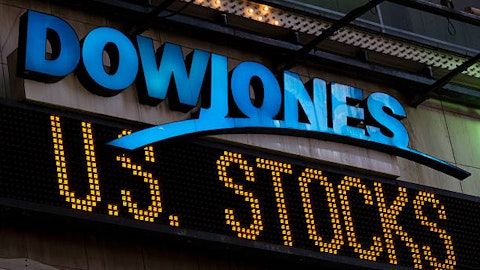Operator: Thank you. The next question is coming from Bill Carcache of Wolfe Research. Please go ahead.
Bill Carcache: Thank you for taking my question, and good morning. I wanted to follow up on your comments about customer engagement spending outpacing revenue growth. Can you speak broadly to your ability to continue to drive customer engagement with elevated investment spending, while at the same time offsetting that margin pressure with operating expense leverage in other parts of the business? And I guess, you know, do you anticipate positive operating leverage on an aggregate basis with revenue growth outpacing the sum of that customer engagement and operating expense combined?
Christophe Le Caillec: Yes. There’s a lot here. So let me first take you through customer engagement. The key things for us and you’ve heard us say this for years, right? We build premium products and we price for that value. You’ve heard say as well that over the last years, we — the mix of the portfolio shifted more towards premium products. That premiumization of the portfolio is the key driver behind that ratio of variable customer engagement expenses to revenue to more platinum card members, we bring more variable customer engagement expenses you should expect to see. But at the same time, we have a lot of initiatives to actually optimize this. And we have a lot of innovation in that space. I’m going to share with you one that is driving a lot of efficiencies for us.
We’ve recently introduced there pay with point option where you can actually go in the app or the website, select one specific transaction and pay with points. So we have that either constant innovation to try to delight the customers, make their life easier, and at the same time, create efficiencies in terms of the weighted average cost per point. And specifically in Q4, one of the driver of that efficiency or that variable cardmember engagement expense was the fact that we saw less point redemption with airline tickets, which is one of the most expensive cost per point that we have. That drove some efficiencies in that metric. We also saw as there are some softness in in some T&E categories, less point accelerators earned and that created as well some efficiencies there.
The reason why I’m pointing that out is just to give you some example of some of the natural hedges that exist in our business model, where — when you see a little bit of softness in the top line, that creates some savings as well in some expense lines. So you know, we guided there — towards a little bit of an increase in terms of the variable cardmember engagement expenses, and we’re going to keep monitoring that. But I feel good about that trend. And I think that, that margin is still very strong and able to generate very strong earnings. We’ve committed to containing OpEx, and as I’ve said, we expect 2024 offering up expenses to be you know about flat to where we are ending 2023. And marketing expenses will dial up or down based on opportunities that we see based on the efficiencies that we create as well.
The model works really well, as you can see, and I’m comfortable that the model is strong. And we are stress-testing that model running multiple scenarios and it works well in terms of its ability to generate earnings over time. And I would say risk-adjusted earnings because that powerful model why do we pay on variable card member engagement expenses comes back with a multiple on the credit line. We attract positive select — we generate positive select. We attract premium card members who have a very strong credit profile, and I like paying for that as opposed to trying to control the credit risk down the road.
Operator: Thank you. The next question is coming from Jeff Adelson of Morgan Stanley. Please go ahead.
Jeff Adelson: Hi. Good morning, and thank you for taking my questions. Chris and Steve, just wanted to dig into the softer T&E trends a little bit. You know, it looks like you’re seeing some softness, particularly in airline spend, you’re seeing some slower point redemptions for tickets there. Just maybe give us some insight into what you’re hearing and seeing from your card members on that front, and then just maybe in the quarter book, can you help us understand what you’re kind of embedding in your expectations for T&E from here? I think in the past, you’ve talked about how the booking trends have been a pretty good indicator of what’s to come. Maybe any comment on what you’re seeing there?





